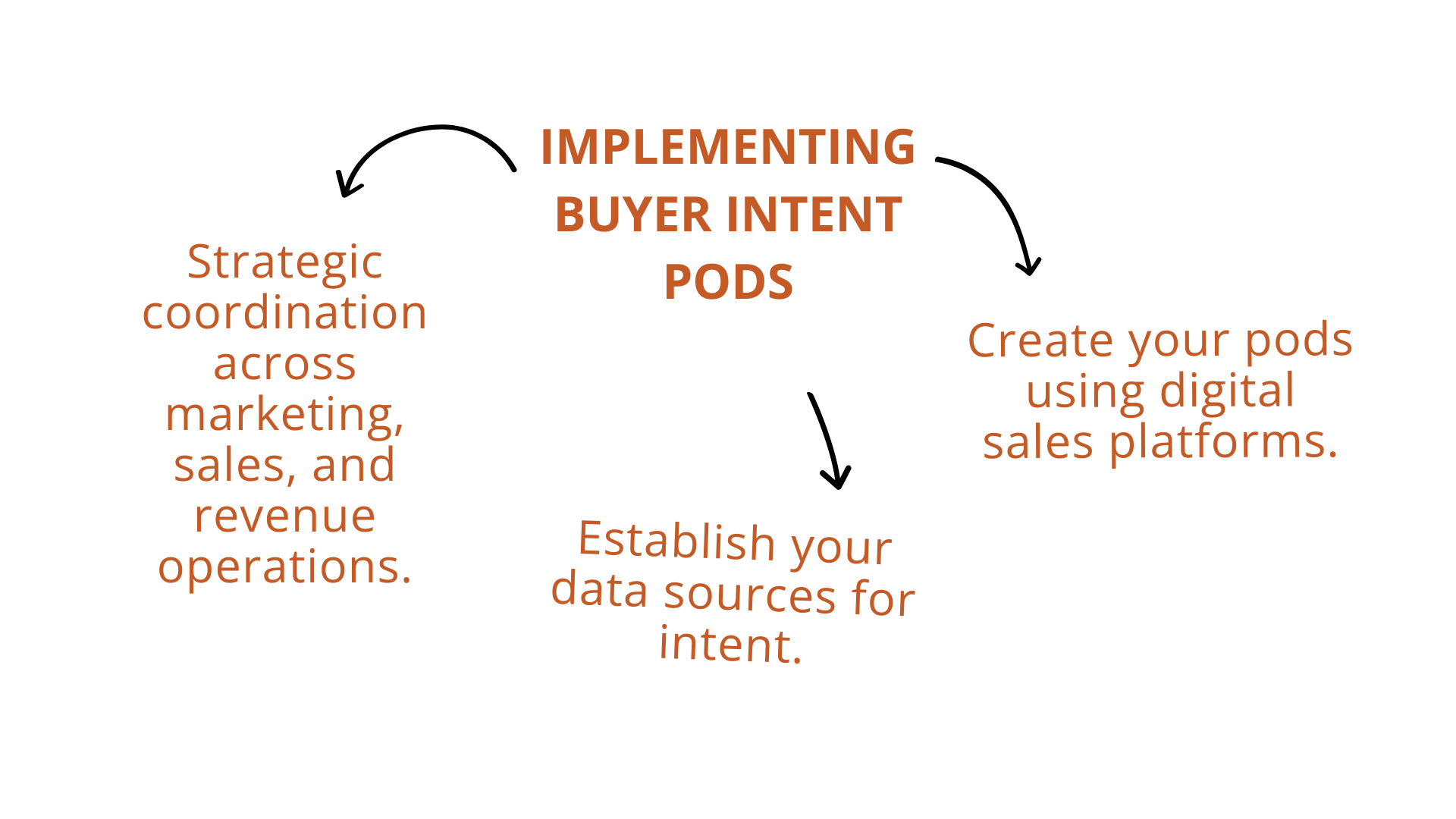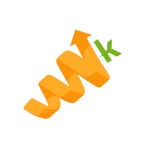How Buyer Intent Pods Transform Anonymous Traffic Into Sales
Picture this: Your marketing team generates thousands of website visitors monthly, but your sales team struggles to identify which prospects are actually ready to buy. Meanwhile, your competitors are closing deals 36% faster using a sophisticated approach called buyer intent pods. This isn’t science fiction. It’s the new reality of B2B sales in 2025.
Buyer intent pods represent a shift toward precision-guided marketing. Combining real-time behavioral data with personalized digital experiences enables sales teams to focus their energy on prospects who are actively displaying purchase signals, rather than chasing lukewarm leads.
Key Takeaways
- Buyer intent pods deliver a measurable revenue impact, with companies seeing 2.5 times higher average deal sizes, 36% faster sales cycles, and 3.7 times higher lead-to-opportunity conversion rates compared to traditional approaches.
- Combine real-time behavioral data with personalized digital experiences by layering first-party website signals with third-party intent data from platforms like Bombora, focusing on high-intent signals from the past 7-14 days.
- Focus on engagement depth rather than vanity metrics by tracking decision-maker participation within target accounts, content consumption time, and material sharing activity to identify genuine purchase readiness.
- Implement cross-functional coordination across marketing, sales, and revenue operations using digital sales room platforms that automatically populate with CRM data and trigger alerts when engagement spikes occur.
- The market opportunity is accelerating rapidly, with Gartner predicting 30% of B2B sales cycles will operate through Digital Sales Rooms by 2028, making early adoption a competitive advantage.
TABLE OF CONTENTS:
What Are Buyer Intent Pods?
Buyer intent pods are dynamic, data-driven microsites that combine intent tracking with personalized sales experiences. Unlike traditional landing pages or email sequences, these pods adapt in real-time based on prospect behavior, creating a tailored journey for each potential buyer.
The “pod” concept is inspired by digital sales room technology, where prospects access a branded, secure environment featuring relevant content, stakeholder collaboration tools, and engagement tracking. When layered with intent data, behavioral signals indicating purchase readiness, these pods become powerful conversion engines.
Think of buyer intent pods as your sales team’s crystal ball. They reveal not just who visited your pricing page, but who downloaded your ROI calculator, spent eight minutes watching your demo video, and shared content with their CFO. This insight transforms how sales teams prioritize their outreach.
Market Momentum Behind Buyer Intent Pods
The timing for buyer intent pods couldn’t be better. Gartner research indicates that by 2028, 30% of all B2B sales cycles will primarily operate through Digital Sales Rooms—the technology powering buyer intent pods.
Organizations adopting digital sales rooms experience an average 20% increase in sales revenue and a 15% increase in customer satisfaction, according to Forrester research. The financial impact speaks for itself: companies are seeing measurable returns on their intent-driven strategies.
| Metric | Traditional Approach | Buyer Intent Pods | Improvement |
|---|---|---|---|
| Average Deal Size | $45,000 | $112,500 | 2.5x higher |
| Sales Cycle Length | 6.2 months | 4.0 months | 36% faster |
| Lead-to-Opportunity Rate | 12% | 44% | 3.7x higher |
The underlying market tells an even more compelling story. The global digital sales room software market is valued at USD 322.17 million in 2024 and is projected to reach USD 1,025.5 million by 2033, reflecting a CAGR of 13.73%. This growth signals that buyer intent pods are moving from early adopter territory into mainstream B2B strategy.
Real-World Impact: Case Studies
BetterCloud, a mid-market SaaS company, needed to increase sales efficiency within its account-based marketing program. They implemented a buyer intent pod approach combining G2 intent signals with orchestrated ads and coordinated sales outreach. The results were remarkable: 2.5× higher average deal size, 36% faster deal closures, and 3.7× higher opportunity creation from intent-identified accounts.
Trumpet, a sales enablement platform, faced a distinct challenge: providing revenue teams with real-time visibility into buyer engagement. Their solution involved implementing Signals & Insights to automatically analyze Pod actions and push instant, high-intent alerts to Slack and Teams. This integration enabled data-driven follow-ups and faster responses to high-intent behavior.
“Buyer intent pods replace guesswork with intent signals. We nudge buyers when they’re most receptive, not when we’re desperate.” – Sales Director, Fortune 500 Technology Company
Perhaps most impressive was SugarCRM’s use of buyer pods for SDR outreach. To better score accounts, they formed a cross-functional ABM pod with Bombora products to identify intent spikes, such as leads who have been actively researching competitors or reading their content. The result? Deals were closed more quickly with the most effective outreach methods.
Implementation Blueprint

Building effective buyer intent pods requires strategic coordination across marketing, sales, and revenue operations. Start by identifying your highest-value prospect segments. Those accounts are most likely to generate significant revenue and have shorter sales cycles.
Next, establish your data sources for intent. First-party signals from your website, content downloads, and demo requests are the best examples. Layer in third-party intent data from platforms like Bombora or ZoomInfo to capture broader market research behavior. Focus on high-intent signals from the past 7-14 days.
Create your pod infrastructure using tools like Trumpet or similar digital sales room platforms. These environments should automatically populate with CRM data, personalize content based on prospect behavior, and trigger alerts when engagement spikes occur. Integration with your existing tech stack, CRM, marketing automation, and communication tools ensures seamless workflow adoption.
For companies focused on developing comprehensive buyer personas, buyer intent pods provide unprecedented insight into actual prospect behavior patterns, enabling more precise targeting and messaging.
Measuring Success Beyond Vanity Metrics
Traditional marketing metrics, such as click-through rates and email opens, only offer a false sense of progress and become less relevant when measuring buyer intent pods. Instead, focus on engagement depth, stakeholder expansion, and velocity metrics. Track how many decision-makers within target accounts engage with your pods, how long they spend consuming content, and which materials generate the most sharing activity.
Revenue-focused metrics tell the real story. Monitor how intent-driven outreach affects your pipeline velocity, average deal size, and close rates. The most successful implementations experience 25-30% shorter sales cycles and significantly higher win rates on deals originating from intent-triggered pods.
Your Competitive Advantage Starts Now
Are you still struggling to identify prospects who are willing to buy your products? Instead of using traditional lead targeting, buyer intent pods create highly personalized spaces where your most valuable accounts are more likely to convert into customers. As a result, you can deliver personalized, data-driven experiences that meet prospects exactly where they are in their buying journey. The question isn’t whether buyer intent pods will become standard practice — it’s a question of whether your organization will lead or follow this transformation.
Ready to transform your anonymous traffic into revenue-ready prospects? Our Karrot ABM tool can deliver personalized LinkedIn ads to your highest value prospects, resulting in more qualified leads and closed deals.
Ready to turn your website traffic into revenue-ready prospects who actually close deals?
Frequently Asked Questions
-
What technology stack is needed to implement buyer intent pods?
You’ll need a digital sales room platform like Trumpet, CRM integration, marketing automation, and intent data sources such as Bombora or ZoomInfo. The system should automatically populate with CRM data, personalize content based on prospect behavior, and trigger alerts when engagement spikes occur. ABM ad platforms, such as Karrot ABM, can also enhance your account targeting.
-
How do buyer intent pods differ from traditional landing pages?
Unlike static landing pages, buyer intent pods are dynamic microsites that adapt in real-time based on prospect behavior. To put it simply, buyer intent pods adjust their messaging to better align with prospects who are actively researching your company or the solutions you offer. They combine intent tracking with personalized sales experiences and provide stakeholder collaboration tools within a secure, branded environment.
-
What types of intent data should I focus on for the best results?
Focus on high-intent signals from the past 7-14 days, combining first-party website signals with third-party intent data. Track website visits, decision-maker participation within target accounts, content consumption time, and shares to identify genuine purchase readiness.
-
How should I measure the success of buyer intent pods?
Move beyond vanity metrics and focus on engagement depth, stakeholder expansion, and velocity metrics. Track pipeline velocity, average deal size, close rates, and how many decision-makers within target accounts engage with your pods.
-
What kind of ROI can I expect from implementing buyer intent pods?
Companies typically experience 2.5 times higher average deal sizes, 36% faster sales cycles, and 3.7 times higher lead-to-opportunity conversion rates. Organizations that adopt digital sales rooms experience an average 20% increase in sales revenue and a 15% increase in customer satisfaction.
-
How do I identify which prospects are ready for buyer intent pod outreach?
Start by analyzing your ideal customer profile and focus on the highest-value prospect segments with shorter sales cycles. Utilize real-time behavioral data to identify prospects exhibiting purchase signals, including visits to pricing and product comparison pages, engagement with demo videos, and content sharing with stakeholders.
-
What teams need to be involved in implementing buyer intent pods?
Implementation requires strategic coordination across marketing, sales, and revenue operations teams. Cross-functional collaboration ensures seamless workflow adoption, proper CRM integration, and effective response to high-intent behavior alerts.




